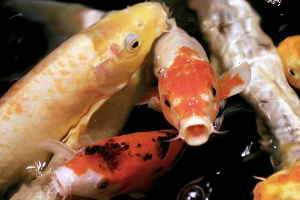The Dynamics of Small Populations

|
| Credit: TheGiantVermin |
When individuals rely on the presence of others to increase their chances of survival and reproduction, the emergence of adaptations that reduce this dependence can help rescue small populations from extinction.
Exploring the ecological and evolutionary consequences of the relationship between individual fitness and population size is the focus of Andrew Kanarek's research as a postdoctoral fellow at NIMBioS. Kanarek studies the dynamics of small populations and in particular how individual differences in morphological, behavioral, and life history traits influence population viability at low density.
Called the Allee effect, this theory suggests that for small populations, reproduction and survival rates of individuals increase as the population grows. This positive relationship between individual fitness and population size is often the result of mate limitation, when males and females have difficulty finding each other, but can also arise due to the advantageous effects of group feeding and defense. The principle has been observed in numerous species ranging from bacteria to plants to animals. The Allee effect is attributed to American animal behaviorist Warder Clyde Allee who first wrote about this population phenomenon in the 1930s when he observed that goldfish grew faster when there were more individuals in the tank to condition the water by releasing protective chemicals, such as calcium salts, which enhanced survival.
Kanarek, who has a Ph.D. in biology from Colorado State University, is developing spatially explicit mathematical models that incorporate eco-genetic trait dynamics and account for individual phenotypic variation. Much of the research focuses on building what's called individual-based models to study how complex patterns arise from simple decisions at the organismal level.
Kanarek's interest in Allee effects grew out of a curiosity in animal and human behavior. "Group formation, communication, and sociality seem to be some of the emergent properties, based on multiple direct and indirect environmental factors, to avoid Allee effects," Kanarek said. "Thus, elucidating these factors to explain life history strategies and applying them in the context of adaptive evolution for the persistence of small populations has motivated much of my research."
Ultimately, understanding the dynamics of small populations can help in predicting the viability of species and also help in developing effective strategies to manage invasive pests and pathogens, as well as endangered species.
#
The National Institute for Mathematical and Biological Synthesis (NIMBioS) brings together researchers from around the world to collaborate across disciplinary boundaries to investigate solutions to basic and applied problems in the life sciences. NIMBioS is supported by the National Science Foundation, the U.S. Department of Homeland Security, and the U.S. Department of Agriculture with additional support from The University of Tennessee, Knoxville.
NIMBioS
1122 Volunteer Blvd., Suite 106
University of Tennessee
Knoxville,
TN 37996-3410
PH: (865) 974-9334
FAX: (865) 974-9461
Contact NIMBioS


